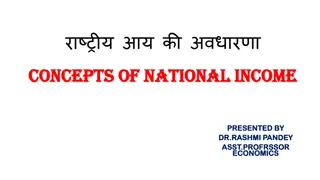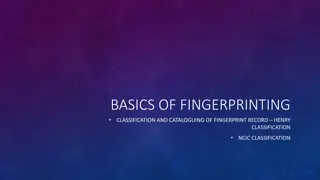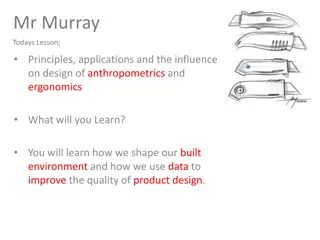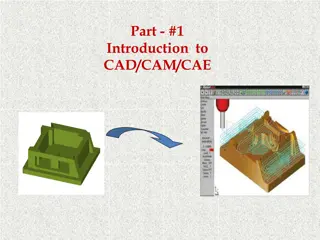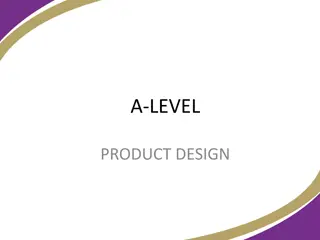Material Classification in Product Design
Materials used in product design are categorized into papers and boards, metals, woods, polymers, composites, smart materials, and modern materials. Each classification has distinct properties and applications. Understanding these classifications is crucial for selecting the most suitable material for specific design purposes, such as product analysis and material identification.
Download Presentation

Please find below an Image/Link to download the presentation.
The content on the website is provided AS IS for your information and personal use only. It may not be sold, licensed, or shared on other websites without obtaining consent from the author.If you encounter any issues during the download, it is possible that the publisher has removed the file from their server.
You are allowed to download the files provided on this website for personal or commercial use, subject to the condition that they are used lawfully. All files are the property of their respective owners.
The content on the website is provided AS IS for your information and personal use only. It may not be sold, licensed, or shared on other websites without obtaining consent from the author.
E N D
Presentation Transcript
2. Classification of materials
Starter For 2 minutes, discuss on your tables and write in your book 0:00 0:01 0:02 0:03 0:04 0:05 0:06 0:07 0:08 0:09 0:10 0:11 0:12 0:13 0:14 0:15 0:16 0:17 0:18 0:19 0:20 0:21 0:22 0:23 0:24 0:25 0:26 0:27 0:28 0:29 0:30 0:31 0:32 0:33 0:34 0:35 0:36 0:37 0:38 0:39 0:40 0:41 0:42 0:43 0:44 0:45 0:46 0:47 0:48 0:49 0:50 0:51 0:52 0:53 0:54 0:55 0:56 0:57 0:58 0:59 1:00 1:01 1:02 1:03 1:04 1:05 1:06 1:07 1:08 1:09 1:10 1:11 1:12 1:13 1:14 1:15 1:16 1:17 1:18 1:19 1:20 1:21 1:22 1:23 1:24 1:25 1:26 1:27 1:28 1:29 1:30 1:31 1:32 1:33 1:34 1:35 1:36 1:37 1:38 1:39 1:40 1:41 1:42 1:43 1:44 1:45 1:46 1:47 1:48 1:49 1:50 1:51 1:52 1:53 1:54 1:55 1:56 1:57 1:58 1:59 2:00 Do you know the 7 classifications of materials? STRETCH AND CHALLENGE Why may have you seen these terms before? give examples
Learning Objectives Understand the classification of materials Explain the different types of materials Discuss the difference between the classifications of materials L/O Understand the different classification of materials and their sub categories
Classification of materials Materials for product design are split into the following classifications: Papers and boards Metals Woods Polymers Composites Smart materials Modern materials Exam tip Product analysis and material identification require knowledge of specific materials. Always use the specific name (e.g. low carbon steel) rather than writing metal . Metals, woods and polymers have more than one classification. Material classification knowledge is needed so that the most appropriate material is selected for specific applications
Metals Metals Ferrous Non-ferrous Alloy A metal containing mostly iron and carbon. Ferrous metals are magnetic and will rust A metal that does not contain iron. Non-ferrous metals are not magnetic and do not rust. A metal made of two or more metals; or combining two or more elements, one of which must be metal Stainless steel, bronze, brass, duralumin, pweter Low carbon steel, medium carbon steel, cast iron Aluminium, copper, zinc, silver, gold, titanium, tin
Woods Woods Manufactured board Hardwood Softwood A wood from broad leafed (deciduous) trees A wood from a coniferous (cone bearing) tree. A man-made wood- based composite material. These trees generally are slow growing and lose their leaves in autum. These trees are generally fast growing and tend to be evergreen. Manufactured boards are available in much larger sizes than solid wood. Oak, ash, mahogany, teak, birch, beech Pine, spruce, Douglas fir. redwood, cedar, larch Plywood, marine plywood, aeroply, flexible ply, chipboard, MDF
Polymers Polymers Thermoplastic Thermosetting Elastomer A material which can be repeatedly reheated and reshaped, allowing it to be recycled after its initial use. A material which when heated undergoes a chemical change whereby molecules form rigid cross links. A material which at room temperature can be deformed under pressure and then upon release of the pressure, will return to its original shape. Thermosetting polymers cannot be reheated and reshaped. LDPE, HDPE, PP, HIPS, ABS, PET, PVC Natural rubber, polybutadiene, neoprene, silicone Urea formaldehyde, melamine formaldehyde, polyester resin, epoxy resin
Classification of materials As a class we have focused on 3 of the 7 classifications of materials, 3 of the materials covered are sourced as the main categories and ones you should know perfectly. The other 4 classifications are ones that some may know more than others and the task now will allow you to focus on the materials you are unsure of. The remaining material classifications are: Papers and boards Composites Smart materials Modern materials Select 2 of these classifications that you feel would be most beneficial to you, ones where you are unsure about their properties or want to revisit the information you once knew. For a classification, find the definition, sub classifications and examples within that material. The information can be found in your revision guides.
Now test yourself 1. What classification of material is larch? 2. List three classifications for metals 3. Silicone is an example for what classification of material? 4. Define what is meant by smart material and give two different examples Typical mistake Make sure that you don t suggest inappropriate materials for products for example, naming a Thermosetting plastic for a supermarket carrier bag. This would be inappropriate for many reasons but one is that carrier bags are often recycled and thermosetting polymers cannot be recycled.




